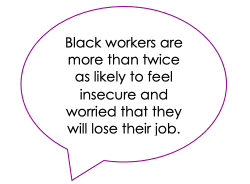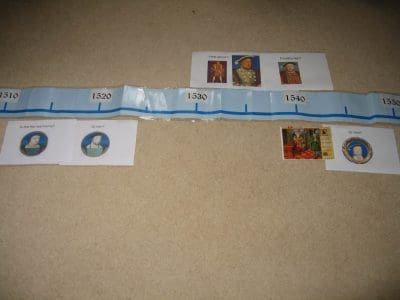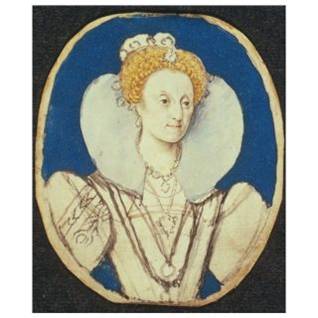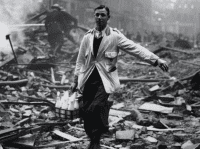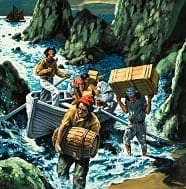Outstanding Lessons and smart tasks
Black and British – KQ5 – How did the arrival of the Empire Windrush change the way Black People were treated in Britain?
Subscribers only: You must be logged in to view this content in full. Please Login or register
Read MoreBlack and British – KQ6 – How far has life improved for Black people living in Britain in the last 60 years?
This active session asks pupils to create a physical fortunes graph to show the effects that changes in the law…
Read MoreTop 10 things your KS2 pupils need to know – Early Islamic civilization
Top 10 things your KS2 pupils need to know, and remember, about Early Islamic civilization 1. 1000 years of extraordinary…
Read MoreTop 10 things your pupils need to know – Roman Britain
Top 10 things your pupils need to know about Roman Britain 1. Roman Britain was part of a huge empire…
Read MoreAncient Egypt : a new Pompeii?
A few weeks ago, Egyptian archaeologists the discovery of a “lost city” of the pharaohs dating back some 3,400 years…
Read MoreBeyond Face Value – KQ1 – Henry VIII a question of interpretations. Could you spot Henry VIII in a police line-up?
This is a really fun lesson which shows children what is meant by historical interpretations in an engaging and accessible…
Read MoreBeyond Face Value – KQ2 – Elizabeth I portraits – Why do Elizabeth I portraits mysteriously start showing her looking younger towards the end of her reign?
This powerful lesson on Tudor portraits as propaganda gives pupils the chance to appreciate that things aren’t always what they…
Read MoreBeyond Face Value – KQ3 – So what were Victorian factory conditions really like? A Y6 study in provenance
In this lesson, pupils are shown 3 images of factory conditions from early/mid Victorian times. Using their knowledge of factory…
Read MoreOutstanding medium term planner for Ancient Civilizations: Egypt Y3
At one point in recent years, there were real fears that Ancient Egypt would be axed from the KS2 curriculum….
Read MoreOutstanding Scheme of Work for Stone Age to Iron Age
This scheme of work, judged outstanding by an OFSTED history inspector now links to all the fully-resourced outstanding lessons and…
Read MorePlanner for Britain at War: The Home Front 1939-45
The new detailed downloadable planner below has key questions, suggested activities, resources and assessments for teaching The Home Front in…
Read MoreStone Age to Iron Age – KQ1 – Is it true to say that Stone Age man was just a simple hunter gatherer only interested in food and shelter?
This KS2 outstanding history lesson on the Stone Age revolves around the reveal of an object found at Star Carr…
Read MoreIdeas for teaching the post-1066 thematic unit at Key Stage 2
Whatever you choose to study for your post-1066 thematic unit here are some pointers to help. 1. Try to make…
Read MoreWW2 – KQ1 – Why did Britain have to go to war in 1939?
Pupils learn the sequence of events leading to the Second World war before a lively role-play debate in which they…
Read MorePlanning for teaching 1000 years of Crime and Punishment (KS2 Thematic Unit)
This post-1066 thematic unit has been produced to meet demand from KS2 teachers for a topic that is genuinely relevant…
Read MorePlanning for teaching Life in Tudor times at KS2
As you know, the requirement to study Life in Tudor Britain was mysteriously and inexplicably removed from the Key Stage…
Read MoreOutstanding Scheme of Work for teaching the Anglo Saxons
You’ll probably be thinking that there is an awful lot of pre-1066 British history in the KS2 curriculum with the…
Read MoreAnglo-Saxons – KQ1a – Why did the Saxons invade? Push or pull?
A fun thinking skills activity in which pupils infer from visual clues before moving on to analyse a range of…
Read MoreStone Age to Iron Age – KQ2 – How much did life change when man learned how to farm?
This session focuses on the concept of change and continuity. Pupils learn of the major changes that came in the…
Read MoreStone Age to Iron Age – KQ2 additional information – Comparing life of hunter gathers with farmers
A simple idea to make the key differences as clear as possible, using just two central questions: how did they…
Read MoreCrime and punishment – KQ1 – How do we know what punishment was like 800 years ago.
How were criminals punished 800 years ago, and how do we know? The story of the fox and the goose…
Read MoreWW2 – KQ2a – Why was it necessary for children to be evacuated? Introductory task
Why was it necessary for children to be evacuated throughout the war, and what was the experience of evacuation really…
Read MoreWW2 – KQ2b – Evacuation enquiry – links with numeracy
This lesson comes towards the beginning of the topic after pupils have explored the nature and reasons for evacuation. I…
Read MoreTeaching Life in Tudor Times for KS2
The Tudors from Key Stage 2 history, it is too good a learning experience for pupils for them to miss…
Read MoreCrime and punishment – KQ2 – What does the legend of Robin Hood tell us about medieval justice?
In the following activities, KS2 pupils learn: a. that medieval justice was loaded in favour of the rich and powerful;…
Read MoreWW2 – KQ2c – Extending the BBC website on Eric the evacuee
The BBC children’s history section has been in touch with the school asking for their help in extending their website…
Read MoreLife in Tudor Times – KQ1 – Henry VIII a question of interpretations. Could you spot Henry VIII in a police line-up?
This is a really fun lesson which shows children what is meant by historical interpretations in an engaging and accessible…
Read MoreAnglo-Saxons – KQ1b – Where did the early Anglo-Saxons live and how do we know? Bells and whistles
This ambitious but engaging lesson asks children to test some simple hypotheses about where the early Anglo-Saxons settled. They start…
Read MoreWW2 – KQ3 – How was Britain able to stand firm against the German threat?
This enquiry revolves around a central contemporary cartoon which encapsulates life on the Home Front and how it was geared…
Read MoreStone Age to Iron Age – KQ3 – What can we learn about life in the Stone Age from a study of Skara Brae?
Enquiry based lesson on images of the remains of buildings found from a study of Skara Brae, a stone-built Neolithic…
Read MoreWW2 – KQ3 additional information – Rationing
In order to prevent serious shortages, as early as 1936 the British Ministry of Food had begun to make plans…
Read MoreStone Age to Iron Age – KQ3 Supporting information – What can we learn about life in the Stone Age from a study of Skara Brae
More than 5,000 years ago, during the New Stone Age, Neolithic farmers and herders reached a group of islands to…
Read MoreLife in Tudor Times – KQ1 part 2 – Great starter on interpretations of Henry VIII
Working closely with academic authors, in this case Catherine Fletcher, always gives a fascinating insight into what historians want to…
Read MoreCrime and punishment – KQ3 – More of the same. How did crimes and punishments change between 1500 and 1750?
All you need for this lesson on Crime and Punishment 1500-1750 is to turn your classroom into an art gallery…
Read MoreAnglo-Saxons – KQ2 – The mystery of the empty Saxon grave.
This highly engaging lesson places pupils in the role of detectives. After a short briefing they have to work out…
Read MoreStone Age to Iron Age – KQ4 – Why did they build Stonehenge?
Pupils are shown a video tour of the site and discover when, where, and how it was built. They speculate…
Read MoreStone Age to Iron Age – KQ4b – How should we remember the Bronze Age?
Pupils study finds from three separate Bronze sites, including them most recent excavations, to enable them to discover the main…
Read MoreCrime and punishment – KQ4 – Why did punishments become so bloody in the 18th century?
Pupils label their own copy of a motivating Hogarth print showing popular attitudes to public executions before explaining the puzzling…
Read MoreLife in Tudor Times – KQ2 – Why did Henry Break with Rome? Love or religion?
This KS2 history enquiry revolves around Henry VIII’s divorce and the break with Rome, one of the best-known stories in…
Read MoreWW2 – KQ4 – Curator’s dilemma. Which 8 objects should we show to explain how Britain coped with the effect of war on the Home Front?
In this activity pupils are cast in the role of local museum curators specializing in the commemorating and interpreting of…
Read MoreStone Age to Iron Age – KQ5 – What was life like in the Iron Age and how do we know?
Pupils speculate as to what holes in the ground shown in an aerial photograph might be, before annotating an artist’s…
Read MoreAnglo-Saxons – KQ3 – Coming of Christianity – How did people’s lives change when Christianity came to Britain and how can we be sure?
A series of smart tasks, rather than a full outstanding lesson. The first part of this two part session looks…
Read MoreCrime and punishment – KQ5 – Why did so much change happen in crime and punishment the 19th century?
Great range of activities including: generating enquiry questions about increase in crime from a line graph; explanation builder to work…
Read MoreLife in Tudor Times – KQ2 part 2 – the highs and lows of Catherine of Aragon
The context of this lesson was to explore the highs and lows of Catherine of Aragon as a lead up…
Read MoreWW2 – KQ4 – Britain during World War Two – Call My Bluff
This activity is designed to promote creative thinking as well as to deepen pupils’ understanding of the objects that are…
Read MoreStone Age to Iron Age – KQ5b – Dragons Den : Which technological development should our Iron Age settlement get next?
Set the scene. A group of the most important members of the Iron Age settlement have gathered to consider their…
Read MoreLife in Tudor Times – KQ2 part 3 – History and literacy – Making sense of a letter from Henry VIII to Anne Boleyn
OR 14 ways of telling this is a love letter. Pupils are given a copy of a letter from Henry…
Read MoreStone Age to Iron Age – KQ6 – Iron Age Hill Fort at Maiden Castle
Iron Age Crimewatch AD 50. Who killed the 52 dead bodies at Maiden Castle? Key Question 6 KS2 pupils…
Read MoreWW2 – KQ4 – Christmas for children on the Home Front during World War Two
This is not an outstanding lesson as such, more a collection of good ideas and support material to stimulate even…
Read MoreLife in Tudor Times – KQ3 – How different was life for people at different levels of society living in Tudor times?
This lesson features the lives of 4 different Tudor people as evidenced from a key document that they each have…
Read More


